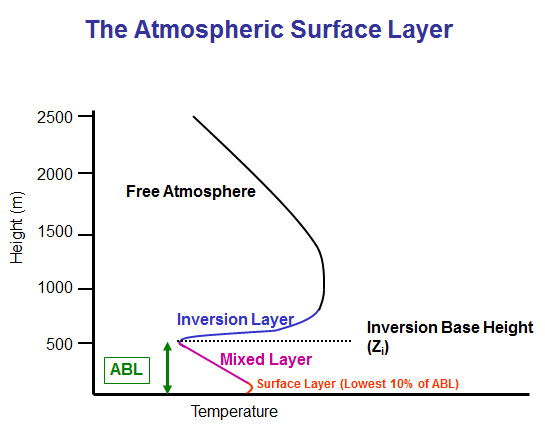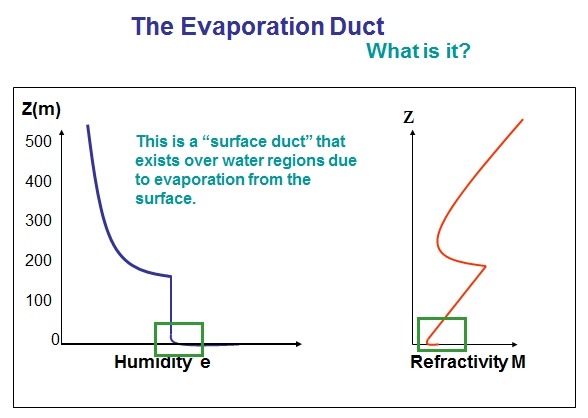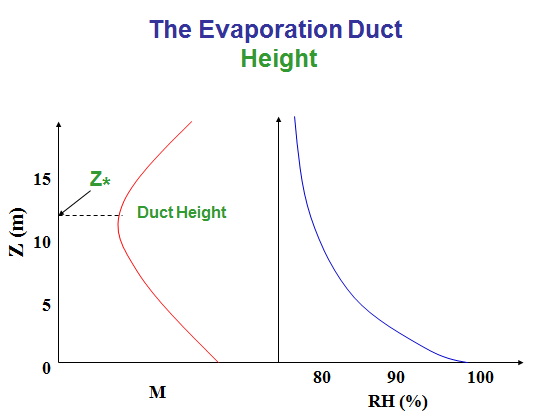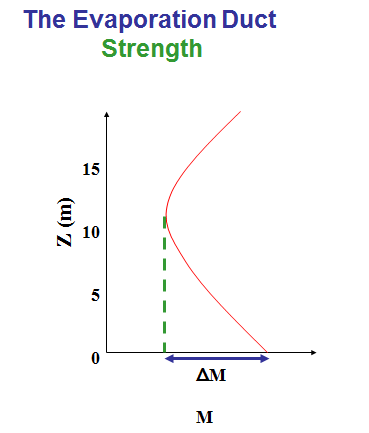The lowest 10% of the ABL is called the Surface Layer. This has special properties that will be examined when we study evaporation ducts. This layer extends only 10's of meters above the surface.
Vertical fluxes (heat, moisture, momentum) are assumed to be constant in the surface layer. These fluxes can be determined from one measurement of temperature, humidity, and wind speed within the surface layer and another measurement at the surface itself. This is accomplished using equations based on Monin-Obukhov Similarity Theory (MO Theory). Unlike the ABL theories, MO Theory is well developed and quite accurate.





